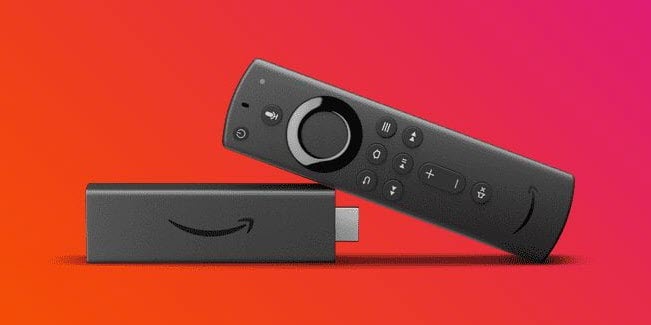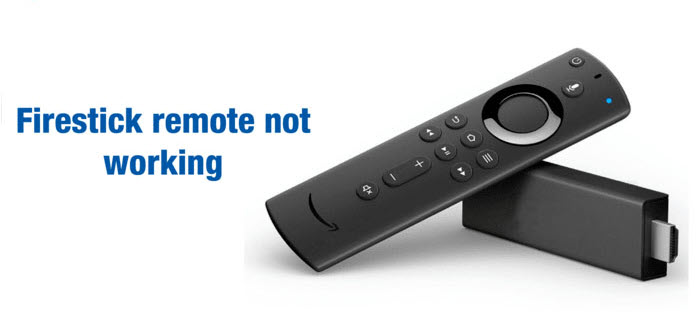What is IPTV (Internet Protocol Television) & How Does It Work?
This post examines what IPTV is and how it works. I also delve into the evolution of television to IPTV, how it differs from traditional TV, its perks, and legality.
The internet has transformed our lives, including how we watch TV. Before the internet, TV content could only reach us through cable or satellite networks. Technological advancements allow us to watch our favorite live channels and on-demand videos online.
One way to watch TV via the Internet is through Internet Protocol Television (IPTV). IPTV is a new technology that transmits TV content over the internet, usually through a private internet network.
It differs from a traditional TV broadcast in that the data transmission occurs over the Internet instead of airwaves or cable networks.
The Evolution of Television: From Broadcast to IPTV
Since television was invented in 1927, it has remained a favorite form of entertainment. Its evolution has been interesting, from the humble beginnings of over-the-air broadcasts to cable transmission and over-the-top streaming.
Broadcast television featured the transmission of signals over airwaves, initially via antennas. This period was characterized by limited TV channels that aired content to areas within reach of the airwave signals. The picture quality was also low, and the visuals were black and white.
Advancements in technology saw the picture quality change and the invention of color TV in the 1950s. Viewing television became even more popular.
In the late 1970s, TV networks invented satellite and cable transmission, which marked the shift from analog to digital TVs. Satellite and cable brought more TV channels with better reach and picture quality.
So, how did we get to IPTV from satellite and cable television?
When the internet came into existence in the early 1980s, inventors did not take much time to experiment with TV transmissions over the Internet. However, the earliest mention of IPTV is in 1995. Certainly, it was not as elaborate as today and mainly focused on transmitting video data over a locally managed IP network.
IPTV faced various hurdles back then, including limited bandwidth, low compression capabilities, and government regulations.
With the rise of more stable internet connections, IPTV has become mainstream. Hybrid IPTV, whereby providers combine traditional broadcast channels with on-demand, catch-up, and other IPTV-related content, is also rising.
How IPTV Works: A Technical Overview
IPTV content is transmitted from the provider’s servers to user devices via the internet, which can be broadband or WiFi. IPTV relies on the internet, unlike cable and satellite TV, which rely on satellite dishes, coaxial, and fiber-optic cables for signal transmission.
The IPTV provider packages the content into IP packets, data packets compressed into a video format that can be transmitted online.
When you request a live programming or on-demand video, the IPTV picks the relevant IP packet and delivers it to your device.
Sometimes, you may need an IPTV set-top box to view the transmitted video data on your device. However, most modern IPTV services have apps compatible with smart TVs, FireStick, mobile devices, streaming devices, and computers, eliminating the need to buy additional hardware.
IPTV uses various video transmission protocols to deliver content over IP networks. These include:
Real-Time Streaming Protocol (RTSP)
The Real-Time Streaming Protocol (RTSP) is a network protocol developed explicitly for use in entertainment and communication systems. It allows you to stream live and on-demand content and has functions such as play, pause, and seek.
Hypertext Transfer Protocol (HTTP)
Hypertext Transfer Protocol (HTTP) lets you stream on-demand content. The protocol divides multimedia content into smaller chunks that you can control how you want to stream. For example, a video is delivered in various bitrates. You can choose a lower bitrate video to match your network capabilities and vice versa.
Real-Time Transport Protocol (RTP)
Real-Time Transport Protocol (RTP) works with RTSP to deliver audio and video in real-time over an IP network. Like HTTP, the protocol divides media into data packets and then adds time synchronization, such as sequence numbers and time stamps. Because of RTP, you can detect content errors or unsynchronized streams.
User Datagram Protocol (UDP)
The User Datagram Protocol (UDP) is another IPTV protocol known for its minimal delays if any, and bandwidth efficiency. It is suitable for streaming live content in real-time, such as sports and news. The downside of UDP is its vulnerability to data loss and lack of an error-correcting mechanism.
Internet Group Management Protocol (IGMP)
The IPTV provider can deliver content to users in unicast or multicast streaming. In multicast, the provider sends many users a single piece of content. The Internet Group Management Protocol (IGMP) makes multicast streaming easy. It is useful when an IPTV provider needs to deliver the same data to various end users.
Different Types Of IPTV Services: Live TV, Video On Demand and More
There are three major types of IPTV formats. These are:
Live TV
Live TV is watching your live TV programs in real time over the internet simultaneously as they are telecast. It’s like watching your favorite programs on TV, only that, in this case, you’re watching the television programming over the internet and not on cable.
Live TV is best for watching news updates, local weather, talk shows, live sports, and performances. Examples of live TV IPTV providers include CBS Sports HQ, Hulu + Live TV, and Sling TV.
Video On Demand (VOD)
Video on demand is an IPTV format that lets you stream pre-recorded content at your convenience. These pre-recorded media include movies, TV shows, and documentaries. You have complete control of your streaming because you can play, seek, pause, and continue from where you left watching a video.
Examples of VOD IPTV services include Tubi and Pluto TV.
Catch Up TV (Time-Shifted TV)
One advantage of IPTV over traditional TV is catching up on missed programs. Some IPTV services offer a catch-up TV feature that lets you watch live TV programs aired earlier.
Time-shifted media allows you to watch a program later for a limited period. You can rewatch, rewind, pause, and resume a recorded live event.
BBC iPlayer is one of the IPTV services that offer the catch-up TV format.
The Role of Internet Protocol on IPTV: Streaming Via IPTV Networks
Internet Protocol (IP) plays various roles in facilitating content delivery on IPTV networks. These roles include:
Data Packetization
When delivering streaming content over a network, it’s easier to transmit data in bits instead of as one large file. These bits are known as data packets. The Internet protocol facilitates data packetization for efficient and reliable delivery from the server to the end user.
Routing
When data is packetized, the various packets contain IP headers that determine the content source and destination. The protocols help route the content from the source to the destination to avoid data loss.
Quality of Service
When using the internet for various reasons, you might experience data traffic. Whether it’s a broadband internet connection or WiFi, it helps if the network knows which content to prioritize.
IPTV networks combine the internet protocol with other protocols to prioritize streaming media over other traffic. These protocols include the Differentiated Services (DS) and Resource Reservation Protocol (RSVP).
This strategy ensures high-quality and lag-free streaming.
Error Detection and Correction
Errors may occur when transmitting data from the server to the destination. In such a situation, the end user must detect the error and request the sender to retransmit. The Internet protocol features an error detection and correction mechanism.
Multicasting
Multicasting entails sending data from a single server to multiple recipients. It is common in IPTV networks where the TV provider delivers a single streaming content to various users. Multicasting is great because it uses less network bandwidth. Internet protocol facilitates multicasting.
IPTV vs Traditional Television: Key Differences and Advantages
IPTV differs in various aspects from traditional cable and satellite TV. These differences include:
Transmission
IPTV delivers television content through an Internet protocol network, which is provided by an internet service provider via WiFi or a broadband connection.
In traditional TV, TV networks transmit content through analog and digital signals that travel through cable or satellite networks.
User Experience
One of IPTV’s unique selling points (USPs) is its personalized and flexible user experience. IPTV delivers content according to your preference. You can watch the show or live programming at your convenience.
Traditional TV relies on scheduled programming. If you want to catch a program, you must be available when it airs. Otherwise, you’ll miss it.
Interactivity
IPTV offers two-way communication between the TV provider and the user, which allows a degree of interactivity with the content. For example, you can pause, seek, or rewind an on-demand video on IPTV.
In traditional TV, the TV network has all the control. We time the commercial break to do something else: You can’t pause the programming.
Picture and Sound Quality
Another area where IPTV excels over traditional TV is picture and sound quality. IPTV transmissions rely on internet connections, which can deliver videos and audio in the highest quality possible. Most IPTV services support high-definition (HD) and 4K resolutions.
Traditional TV’s broadcasting infrastructure has significantly improved but faces picture and sound quality limitations.
Reach
Many IPTV services don’t have geographical restrictions. You can watch an American TV channel in the UK and vice versa. The same applies to VOD content. You can access international and regional TV shows, movies, and foreign language productions.
Cable and satellite TVs rely on regional infrastructure, which limits broadcasts to specific geographical regions. Another aspect that limits traditional TV’s reach is licensing agreements.
Multi-Screen Viewing
You can watch IPTV content on an IPTV-compatible TV, computer, tablet, streaming device, or smartphone. This is a plus for IPTV because family members can watch their favorite content on various devices using one subscription.
Traditional TV broadcasting is confined to a TV set. Although several cable and satellite networks have embraced multi-screen viewing options, they are not as elaborate as in IPTV.
Multi-screen, however, does not only refer to watching IPTV on multiple devices. Sometimes, it means splitting the screen of the same device and watching multiple streaming simultaneously. For instance, many IPTV services let you watch up to 4 (or more) TV channels concurrently by splitting the screen.
Setting Up IPTV at Home: Requirements and Basic Setup Guide
Setting up IPTV at home varies depending on various factors. These factors include:
- Your device: Digital TV, Smart TV, FireStick, streaming device, computer, smartphone, etc.
- The IPTV service: does it have a standalone app or not?
If you’re using a digital TV without IPTV capabilities, you need a set-top box or a streaming stick. These boxes include MAG boxes, Android boxes, FireStick boxes, and dedicated IPTV boxes.
The setup process varies depending on whether the service has a standalone app.
If the IPTV service has an official app, you can download it, sign up with the login credentials, and begin streaming content.
Otherwise, if the IPTV service provider lacks a standalone app, you must download and set up an external IPTV player. Examples of famous IPTV players include IPTV Smarters Pro and TiviMate.
Let’s discuss the step-by-step process in each case:
Setting Up IPTV on TV Set without IPTV Capabilities
Follow the steps below:
- Choose an IPTV provider. There are free IPTV services and others that need a subscription.
- Obtain and set up the IPTV set-top box.
- Connect the set-top box to the internet via an ethernet cable or WiFi.
- If the IPTV service has a standalone app, install it in the set-top box.
- Set up the IPTV app and configure it using the provided login credentials.
- If the provider lacks a standalone app, install a third-party IPTV player.
- Configure the IPTV player with the login details provided by the IPTV provider. These include the M3U playlist, access URLs, username and password.
- After successfully logging in to the IPTV user interface, organize your channels and on-demand content.
- Test the provided channels and on-demand videos. Notify the provider of issues such as channel unavailability, lack of content on VOD videos, and streaming quality.
- If everything is working seamlessly, browse and start streaming your favorite content.
Setting Up IPTV on Streaming Devices with IPTV Capabilities
Devices like Amazon FireStick, Smart TVs, Roku, and Apple TV have built-in IPTV capabilities. The same applies to standard home devices like computers, tablets, and smartphones.
Follow these steps to set up IPTV on such devices:
- Choose your IPTV service and subscribe if it’s a premium service.
- Connect your device to the internet via an Ethernet cable or WiFi.
- Install the IPTV app onto your compatible device. If the IPTV service doesn’t have a standalone app, install a third-party IPTV player into your device.
- Log in with your account details to access the content for the inbuilt IPTV app.
- Set up the service on the external IPTV player for IPTV services without a standalone app. To do this, sign in with the provided M3U playlist, URL, username, and password.
- Following a successful login, please browse the channels and VOD videos and organize them based on your preference.
- Test the content and provide feedback to the provider if any issues arise. Otherwise, browse and start streaming your favorite content.
Content Delivery in IPTV: Understanding Multicasting and Unicasting
IPTV delivers content to users in two distinct streaming techniques. These are unicasting and multicasting. Both techniques serve various purposes in streaming and have their perks and drawbacks. Let’s discuss them below:
Multicasting
Multicasting involves sending one stream of content to many users simultaneously.
Suppose you are the IPTV provider, and several users request to stream a live football game. You can collect information such as destination IP address from the various users and transmit the stream to all the devices simultaneously.
Multicasting mainly delivers live content, such as TV programs and pay-per-view events. Its perks include easy bandwidth management and low latency because the data is not duplicated several times.
This method requires a privately managed network, so it’s not ideal for delivering content over the public internet.
Multicasting also assumes the end users have similar devices and bandwidth capabilities. The single stream may fail to cater to individual needs like network speed and device streaming capabilities.
Unicasting
Unicasting refers to one-to-one streaming whereby the provider sends individual streams to viewers. It doesn’t matter if the requested content is the same. The provider will duplicate the content and send personalized streams to each viewer.
This delivery method is suitable and widely used in streaming on-demand content.
The perks of unicasting include the delivery of personalized streams tailored to your streaming needs, including bandwidth capability and device capacity.
For example, if one user requests a TV show on a modern TV, they will receive a 4K stream. If smartphone users request the same show, they will receive an HD stream that suits their devices’ capability.
The one disadvantage of unicasting is that it strains bandwidth and other network resources. This may lead to server overload, which will consequently cause performance issues.
It can also cause latency during peak hours when multiple users request the same content, but it’s delivered separately.
Legal Complications and Avoiding Illegal IPTV Services
Legal concerns have emerged regarding IPTV services for various reasons. These include airing premium content for free or at suspiciously low prices. Legal complications arise when a service distributes unauthorized content or violates copyright agreements.
However, verifying an IPTV service’s legitimacy is challenging because it depends on various factors. We never endorse copyright violations. However, we champion your right to privacy. Therefore, I recommend using a reliable VPN service like ExpressVPN with IPTV.
Check out our post on whether IPTV is legal for more information.
Top 5 IPTV Services: An Overview
Below are the top five legitimate IPTV services:
1. Fubo TV

For on-demand content, Fubo TV offers hundreds of movies and TV shows. You can also access other add-ons, such as PPV events, at an extra fee.
2. Vidgo

In addition to live programming, Vidgo is home to hundreds of on-demand content.
3. Hulu + Live TV

As of this writing, Hulu + Live TV offers up to 90 cable TV channels over the internet. They include sports, general entertainment, and news channels.
4. YouTube TV

Channels on the lineup include sports, news, and entertainment channels. YouTube TV’s DVR capabilities let you record live events to watch later at your convenience.
5. Sling TV

The IPTV offers up to 40 TV channels across sports, music, business, and general entertainment. It also offers VOD content free with the subscription and on PPV and rental terms.
The Future of IPTV: Trends and Potential Developments
The world is embracing digital trends. This points to the probable growth of IPTV as users lean towards cheaper, more flexible, and personalized ways to watch TV. IPTV market growth is predicted to reach about $146 billion by 2031.
We can expect the following in the coming years regarding IPTV:
- More adoption by users due to the lower cost of IPTV compared to traditional TV.
- Personalized content based on data analytics that identifies user preferences and streaming habits.
- Better IPTV infrastructure to improve user experience.
- IPTV integration with other emerging technologies, such as AI assistance, virtual reality (VR), and Augmented Reality (AR).
- Original content that is not tied to traditional TV networks or production studios.
FAQ’s
Do you have to pay for IPTV?
Not always, because there are free options. However, the free services usually have serious limitations. You may need to upgrade to a paid IPTV service for a better experience.
Can I watch IPTV for free?
Yes, some IPTV services let you watch content for free. However, some may be illegal, and others may have limited content.
What are the disadvantages of IPTV?
IPTV advantages include a vast library of live TV and on-demand content, flexibility in viewing, global reach, and accessibility on multiple devices.
How does IPTV service work?
An IPTV service transmits live TV programs over the internet instead of through satellite or cable networks. To receive the content over an IP network, you must use a set-top box or a device with IPTV capabilities.
What do you need for IPTV to work?
For IPTV to work, you need a stable internet connection and a device with IPTV capabilities. Most modern streaming devices, including smartphones, computers, tablets, and smart TVs, are IPTV-supported. An IPTV set-top box can make older TV sets IPTV-compatible.
How does IPTV connect to TV?
You can connect IPTV to your TV in two ways. You connect the IPTV set-top box to non-smart TVs using an HDMI or fiber optic cable. For smart TVs, you install the IPTV app directly to the device.
Is it legal to have IPTV?
Yes, IPTV is legal if the provider has the authorization and licensing to distribute the content.
Conclusion
IPTV’s flexibility, personalization, and interactive features have lifted it above traditional television. This has prompted cable and satellite networks to adopt a hybrid arrangement in broadcasting to stay relevant. With emerging technologies, IPTV will gain more popularity and become better. Better IPTV developments will result in more adoption and the consequent market growth.
Best VPN

30-day money back guarantee












